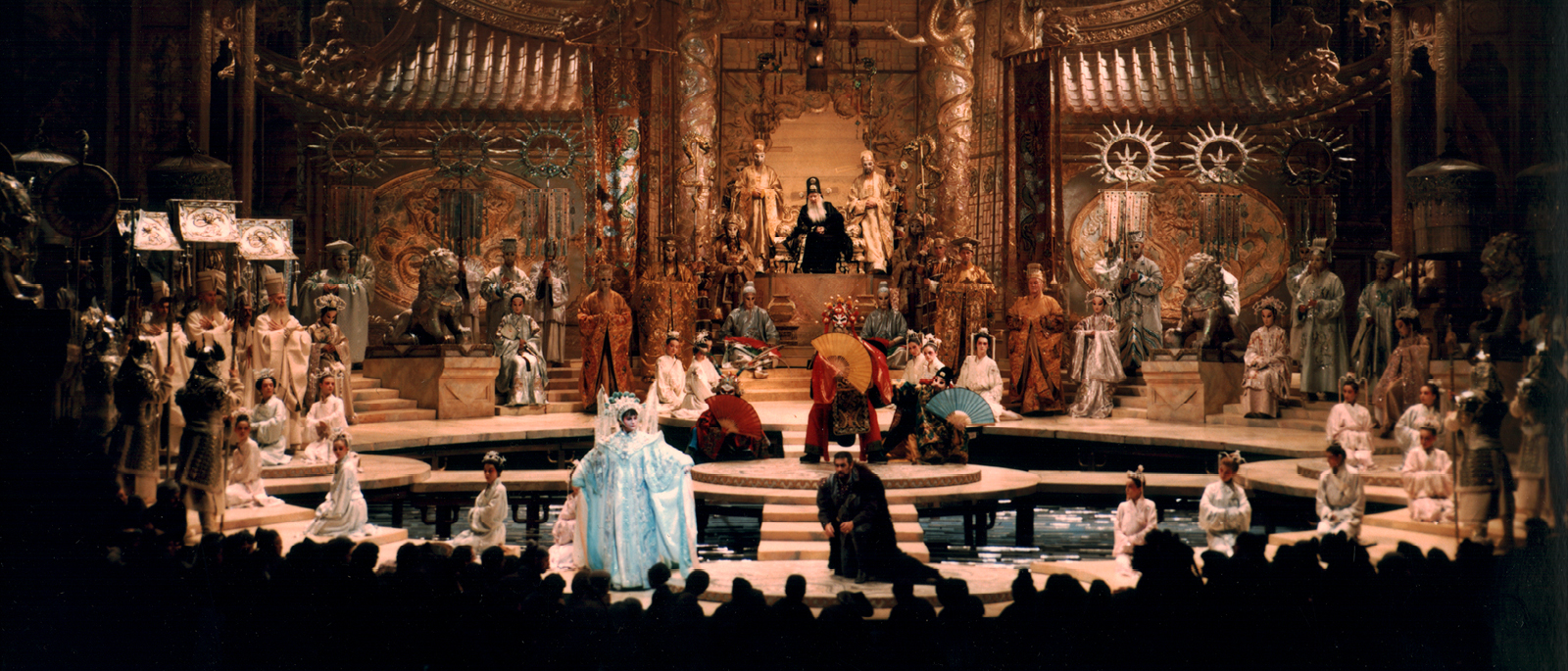
Turandot
When Puccini died in 1924, his final opera, Turandot, remained unfinished. It took two years for Franco Alfano to complete the score, but anticipation for the last work of the most successful composer of the day was immense. The United States premiere took place at the Met in November 1926, less than seven months after the world premiere at La Scala. An elaborate production, designed by Joseph Urban and conducted by Tullio Serafin, boasted a starry cast headed by soprano Maria Jeritza in the title role and tenor Giacomo Lauri-Volpi as Calàf.
Given Turandot’s popularity today, it is surprising that the opera did not immediately gain traction with the public or critics. Despite all the attention and a record box office for the premiere, Turandot only played for four seasons immediately following its Met premiere; however, with the new production in 1961, Turandot found a connection with audiences—which only continued to grow when Franco Zeffirelli’s lavish staging premiered in 1987. The Met has performed the opera 349 times prior to the 2023–24 season.
Left: Soprano Maria Jeritza and tenor Giacomo Lauri-Volpi were known for their powerful voices, which could soar over Puccini’s huge chorus and orchestra. Among her many roles during her storied Met career, Jeritza was a celebrated Tosca and Turandot, as well as Minnie in La Fanciulla del West. Lauri-Volpi sang at the Met from 1923 to 1933, one of several tenors imported to try and fill the void left by tenor Enrico Caruso’s death.
Photo: Herman Mishkin
Right: The Met Archives contain many costumes but none more elaborate and beautiful than the long cape worn by soprano Maria Jeritza in the 1926 Met premiere of Turandot.
Newspaper article from Musical America, December 4, 1929.
Left: Corelli and Nilsson embrace in Act III.
Photo: Louis Mélançon
Right: Swedish soprano Birgit Nilsson and Italian tenor Franco Corelli thrilled Met audiences with their magisterial high notes in Cecil Beaton’s splendid 1961 staging of Turandot. The Met’s ability to cast such impressive singers undoubtedly contributed to the opera’s popularity. Nilsson sang Turandot 52 times at the Met, nearly twice the total of any other soprano.
Photo: Louis Mélançon
Costume sketches for Turandot, 1926–27, by Gretel Urban, daughter and longtime collaborator of set designer Joseph Urban.
Premiering in 1987, Franco Zeffirelli’s production of Turandot remains in the Met repertory and is possibly the most visually lavish staging that the Met has ever mounted.
Photo: James Heffernan
Left: Christine Goerke has been the most frequent Turandot at the Met in recent years and sang the role in a Live in HD transmission in 2019. One of the world’s leading dramatic sopranos, Goerke has primarily specialized in the operas of Wagner and Strauss in recent Met seasons.
Photo: Marty Sohl
Center: Korean soprano Hei-Kyung Hong first sang the role of Liù in 1997 and holds the record for the most performances of the part in Met history.
Photo: Winnie Klotz
Right: The opening cast featured Hungarian soprano Eva Marton as Turandot and Spanish tenor Plácido Domingo as Calàf.
Photo: James Heffernan
Left: Robust-voiced Korean tenor Yonghoon Lee sang the romantic Calàf, with his showstopping aria “Nessun dorma,” in 2022, including in a Live in HD transmission.
Photo: Ken Howard
Right: Eva Marton
Photo: James Heffernan
Turandot